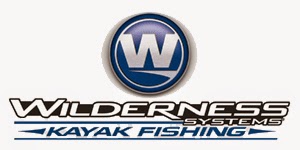For you new guys, the lurkers and quizzers, the ones wanting to get into kayak fishing or just kayaking in general, the perfect kayak does not exist.
For you kayak fishing vets, not all of you but some of you, stop telling them Kayak XR34 is the best in the world and you have to have one or you'll be sorry!
I get it. You love your kayak. You think it's the best. And here's the thing: For you it might be!
But let it be said once and for all, there is no perfect kayak for all people in all situations.
People with a bad back will need a lighter kayak or a trailer. People with only $400 to spend can't afford the Hobie Pro Angler 14 so stop suggesting it.
People who want a river boat may not want the Native Mariner. Especially in low water conditions.
I get it. You are loyal to your favorite brand. That's good. Please understand however, not all kayaks fit all people and situations the way it might fit you.
To grow the sport the most important thing we can do is encourage people to demo as many boats as possible. Sure, you might encourage a certain brand. I think we all do but please, whenever possible, don't encourage someone to buy a kayak "dry". If a person has never been in a kayak and you are encouraging them to buy the XR34, you are rushing. Asking lifestyle questions will lead you to only a handful of kayaks to choose from.
Hey, new guy! Does it seem overwhelming picking your first kayak? I've been there. I bought the only one I could afford. It got me on the water and that was good but it could be very frustrating and I almost died once because of a bad choice of a kayak. Please new guy, be patient. We understand you are super excited to try this cool sport out. We love it too but we have all made different mistakes. I made a really bad one that almost pushed me out of kayak fishing all together.
I purchased a kayak, sight unseen, dry with no demo about five years ago. It was such a good deal I couldn't believe it. So I bought it. Later that week I took it for its maiden voyage and almost turtled a dozen times. I hated that kayak. I felt like I was fighting it the whole time. It was awful and I sold it a month later and lost money. Since then I have purchased several kayaks for different purposes. I have a small water/buddy kayak, a big water kayak, and a family kayak (tandem). All three are different brands. I like them all and they have different purposes. For anyone to tell me that I could get all of my wants in one kayak would seem a fairy tale and frankly, unrealistic. I fish a wide variety of situations. Most people do.
If you only fish one set of ponds or one stretch of river, you might could find one kayak that works well and it could be perfect for you. That doesn't make it perfect for your buddy or that new guy on the forum.
Lots of places around the country have kayak dealers who specialize in kayaks, not just a bait store or grocery store that sells them. Ask them for a demo. Most of these places have people on staff who specialize in kayak fishing and who have paddled all the different brands they carry.Take a look around and see what you can find. If you still don't see a dealer in site, ask on the local fishing forum. Lots of people would be happy to let you try their kayak. I take new people out all the time just to share the kayaking experience with them.
So new guys, demo, demo, demo. Only you can choose for you.
Kayak addicts, encourage them to demo. Don't just be a boat pusher.



